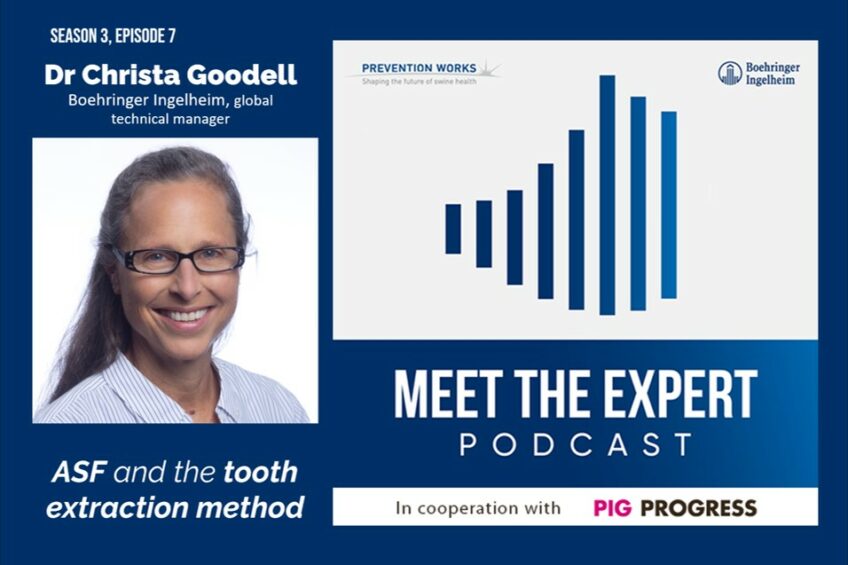Podcast: ASF and the tooth extraction method

In collaboration with Boehringer Ingelheim, in this episode of ‘Meet the Expert’, Pig Progress introduces guest Dr Christa Goodell, global technical manager of Boehringer Ingelheim. Based in Georgia in the US, Goodell talks about African Swine Fever, focusing specifically on the situation in Vietnam and how they are trying to get the virus under control. One method being used is the tooth extraction method.
The ASF situation in Vietnam
After China, Vietnam is home to the largest number of pigs in Asia. According to FAO figures from the last census before ASF in 2018, the country had 28.2 million pigs. The first outbreak of ASF was reported in Vietnam in 2019, and the virus spread throughout the entire country quickly (all 63 provinces), affecting both farms and smallholders. Consequently, the country lost at least 30% of its pig herd. The year ASF struck, the country’s pig herd shrunk to 19.6 million.
Rebuilding the pig industry in Vietnam
While the virus has been detected in 47 provinces this year, more attention is being placed on biosecurity and pig health. The pig inventory level in 2021 was back at 28 million pigs, and the world is watching as the country implements its first round of vaccinations against ASF in numerous provinces.
The tooth extraction method
Standard protocols for control make use of full depopulation when the virus is detected. Goodall notes that significant losses come from culling the whole herd, or even animals that may be at higher risk or suspected of being infected with ASF. In fact, she says should this be the protocol, one study showed that as much as 33% of those animals culled were not infected and should not have been removed.
But might there be another option instead of culling the entire herd? “Rather than removing 100% of the herds and replacing them, what is the likelihood that you can remove the virus if you can identify a clinical animal with the suspicion that the most at-risk animals would be the neighbour on the left and the right of that animal on a sow farm. This became the tooth extraction method,” said Goodall. The term often used today is ‘partial/targeted depopulation’ or ‘precision removal’.
Variable success
The result of a study of the tooth extraction method by Boehringer Ingelheim revealed a success rate of between 30% and 80%. This method, therefore, could have potential but only in conjunction with other measures.
One conclusion of the team is that high-quality diagnostics need to be used by the producers when detecting ASF. Testing more animals is also necessary but is difficult, particularly in more rural areas where access to laboratories is a challenge.
Early identification and action
From the study, Goodall also noted that it became clear that “for those farms that identified and tested and were able to make actions within 7 days of detecting that clinical sign, they were significantly more likely to have fewer positive animals.” Meanwhile, she says, those farms that identified clinical signs and took action only after a week, were over 3 times more likely to have more sows positive in their herd.











